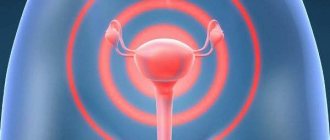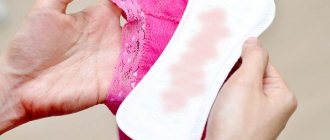The placenta is a very complex biological organ. It is formed in pregnant women and grows in the place where the fertilized egg attaches to the wall of the uterus. A condition in which the placenta does not develop properly is called placental insufficiency. This serious complication of pregnancy is also called placental dysfunction or uterovascular insufficiency. What are the risks of developmental disorders or damage to the placenta? What can cause placental insufficiency, and what are the risks and consequences for the child - read our article.
Functions of the placenta
The placenta provides the fetus with all the necessary substances. From the mother, oxygen-rich blood must pass through the placenta and umbilical cord to reach the baby. Through this organ, the blood of mother and child is filtered, but never mixed.
The primary functions of the placenta are as follows:
- oxygen delivery;
- removal of carbon dioxide;
- transporting nutrients to the child;
- transfer of waste for disposal by the mother's body.
The placenta plays an important role in the production of hormones. It protects the fetus from harmful bacteria and infections. The healthy organ continues to grow throughout pregnancy and is removed during childbirth.
How many sessions should a course of placental therapy consist of?
Placental therapy is based on the method of frequent course action on the necessary areas of the face. The procedure triggers the activation of biologically active points, in other words, “points of youth”. Placental therapy can be called one of the types of mesotherapy, since this procedure is carried out in a similar way.
With placental therapy, an injection is made using a thin needle into precisely those areas of the skin that require correction. The therapeutic course usually includes from 5 to 10 sessions, but only a professional can calculate the required number of procedures. The frequency of sessions is approximately 1-2 times a week. The duration of each session is usually from 30 to 60 minutes, everything will depend on the condition of the skin and the desired result.
Causes of placental insufficiency
Placental insufficiency is associated with blood flow problems. It can also be triggered by taking certain medications or lifestyle habits. The most common causes of pathology are:
- diabetes;
- chronic high blood pressure (hypertension);
- blood clotting disorders;
- anemia;
- certain medications (especially blood thinners);
- smoking;
- drug abuse (especially cocaine, heroin and methamphetamine).
Placental insufficiency can also occur if the placenta does not adhere properly to the wall of the uterus or if it moves away from it. Placental abruption threatens vaginal bleeding and premature birth.
What is needed to start treatment
Placental therapy is not performed on minors; even an adult must obtain permission from a doctor.
The examination consists of:
- General blood test
- Analysis for infections (syphilis, HIV, hepatitis B, C),
- Hormones (GH, ACTH, thyroid hormones, sex hormones),
- Ultrasound of the abdominal cavity, kidneys, thyroid gland, pelvic organs,
- Immune status
- Detailed biochemical blood test.
The World Health Organization recommends undergoing placental therapy sessions with Laennec twice a year if the patient is between 35 and 45 years old, which will help significantly delay the appearance of signs of aging. This period marks the peak of biological activity of the human body.
How is placental insufficiency diagnosed?
A pregnant woman with placental insufficiency usually has no symptoms. However, some “clues” can lead to early recognition of pathology. For example, if the baby is not growing properly, the mother's belly will be small and fetal movements will be barely noticeable. A pregnant woman's uterus should be measured at every prenatal visit, starting at about halfway through pregnancy. If the abdominal measurements are smaller and do not correspond to the gestational age of the fetus, an ultrasound scan should be performed. An ultrasound examination helps the doctor assess the height and size of the future baby, the location and volume of the placenta, and indicate whether the amniotic fluid index is normal or not.
Doppler ultrasound provides complete information about the blood flow in the placenta and the baby’s circulation. Doppler velocimetry can be performed early in the third trimester.
A diagnosis of placental insufficiency may be made if the fetus has an abnormal cardiac tracing called "late deceleration." Late decelerations are a sign of placental insufficiency, even when there are no other signs of decreased blood flow to the placenta.
PLACENTREX GEL Albert David (Placentrex, placental gel, Albert David), 20 g.
PRODUCT DESCRIPTION
Placentrex gel is used for vitiligo, chronic non-healing wounds, placental inflammation and other conditions.
Placentrex Gel may also be used for purposes not listed in this medication guide. Placentrex Gel contains placenta extract as an active ingredient. Placentrex gel works by causing repigmentation in vitiligo. Placenta extract also activates cellular respiration and improves metabolism. It causes the melanin pigment, which is located in the deep layers of our skin, to rise to the surface. From there, melanin is removed along with keratin and exfoliating epidermis.
In addition, placenta extract has been proven to have an anti-inflammatory effect. It can reduce inflammation that has been caused by too much sun exposure. Its components help prevent the formation of spots on the skin and prevent its sagging.
Placenta extract also helps retain moisture in our skin. It protects the skin from shrinking in volume by retaining water in it.
Cosmetics based on placenta extract can be used to regenerate the skin, normalize its fat balance, improve complexion, increase the elasticity of the skin muscles, and slow down the aging process. They also show good results in smoothing wrinkles, moisturizing the skin, and eliminating inflammatory processes. These products effectively moisturize the skin, relieve tension and fatigue, and protect the skin from various harmful influences.
ABOUT PLACENTA EXTRACT
Where do placenta for cosmetics come from?
Anti-aging cosmetics include human or animal placenta. Manufacturers take the placenta after a normal, healthy birth!
Cosmetics with placenta, hormonal?
No! But in the beginning, when scientists first discovered it, it contained natural hormones that are present in the placenta. Then, in order not to disrupt the hormonal levels of people who use such cosmetics, manufacturers began to cleanse the placenta of hormones! After this step, health authorities gave the go-ahead for the free sale of cosmetics containing placenta extract.
What does placenta extract do to human skin?
Firstly, it has a powerful rejuvenating effect. Prevents photoaging, improves complexion, tightens facial contours. Improves blood circulation in tissues, nourishes the skin, helps to better remove toxins.
Placentrex Gel contains more than a hundred vitamins and microelements vital for our cells, it also contains highly active peptides, amino acids, mucopolysaccharides, hyaluronic and nucleic acids!
- Has phenomenal healing properties.
- Has pronounced anti-inflammatory, wound-healing and regenerating properties - prevention of skin photoaging and reduction of existing wrinkles.
— The drug improves blood circulation, oxygen saturation of the skin, stimulates the production of new cells.
— Placenta extract retains moisture in the upper layers of the skin, maintaining natural water balance and preventing dryness.
Contains more than a hundred vitamins and microelements vital for our cells, it also contains highly active peptides, amino acids, mucopolysaccharides, hyaluronic and nucleic acids + proteins that control the vital processes of the fetus. In addition, it is completely absorbed by the body!
IT IS APPLIED FOR
- smoothing and preventing wrinkles - general skin regeneration - eliminating foci of inflammatory processes - increasing the elasticity of skin joints - relieving tension and fatigue of the skin - moisturizing facial skin - improving and improving complexion - protecting facial skin from the harmful effects of sunlight - slowing down the aging process - normalization skin fat balance
The skin is rejuvenated due to the natural stimulation of metabolic processes, stimulation of collagen production and the formation of new skin cells.
Skin rejuvenation actually occurs non-surgically - the properties of the placenta ensure skin restoration thanks to new young cells. Conventional cosmetics can partially chemically correct irreversible aging processes, while products with placenta eliminate the very cause of changes in skin structure, inhibit skin aging and help the body turn on hidden reserves.
At the end of the course of using Placentrex, the well-known “rollback to the previous state” effect does not occur, since the renewed cells literally begin a “new life”.
MODE OF APPLICATION
Every day, in the morning and/or evening, apply a small pea of gel to cleansed skin and spread over the face and area under the eyes. Absorbs instantly without leaving a sticky film. The skin immediately becomes fresh and moisturized.
The aroma is pleasant, fresh, light. The consistency is gel, translucent with a blue tint. Distributes easily over the skin.
Below is the detailed information related to Placentrex Gel uses, composition, dosage, side effects and reviews.
PRECAUTIONS AND HOW TO USE
Before using Placentrex Gel, tell your doctor about your current medications, over-the-counter products (such as vitamins, herbal supplements, etc.), allergies, pre-existing conditions, and current health conditions (such as pregnancy, upcoming surgery, etc.). ). Certain health conditions may make you more susceptible to the effects of the drug. Take as directed by your doctor or follow product directions. Tell your doctor if your condition persists or worsens.
Do not take orally.
Check with your doctor before using this medication on open wounds, dry, cracked, irritated, or sunburned skin.
Wash your hands before and after using Placentrex Gel. Clean and dry the area of skin to be treated. Do not wash the treated area immediately after applying Placentrex Gel. Also avoid using other products on the treated area unless recommended by your doctor. Excessive use may cause pilling. Use a thinner layer or less medication to avoid pilling. * We try to provide only current information about products. But sometimes updates may be delayed. Packaging design may differ from that shown on the website. ** is not a medicine
Possible complications and consequences
Placental insufficiency is not usually considered life-threatening for the mother, but the risks increase if the pregnant woman has hypertension or diabetes. These women are more likely to experience:
- preeclampsia (very high blood pressure and protein in the urine);
- placental abruption (the placenta moves away from the wall of the uterus);
- miscarriage or premature birth;
- C-section.
Symptoms of preeclampsia include excessive weight gain, swelling of the legs and arms, headaches and high blood pressure.
The earlier placental insufficiency occurs, the more serious the consequences for the child can be. Let's list them:
- lack of oxygen at birth (can cause cerebral palsy and other complications);
- learning difficulties;
- low body temperature (hypothermia);
- low blood sugar (hypoglycemia);
- too little calcium in the blood (hypocalcemia);
- excess red blood cells (polycythemia);
- stillbirth.
Placental insufficiency is a process leading to a progressive deterioration of placental function and a decrease in the transplacental transfer of oxygen and nutrients. As a result, the growth and metabolic needs of a growing organism slow down. Child growth restriction is the second cause of perinatal death after prematurity and statistically complicates up to 6% of all pregnancies.
It is becoming clear that problems with the placenta have a significant impact on the fetus with consequences for cardiovascular, metabolic and neurological development in adulthood. Modern medicine is only beginning to uncover some of the underlying mechanisms involved in this complex adaptation, which can lead to reprogramming of the development of fetal organs, mainly the heart, pancreas, lungs and brain.
Because of the serious consequences of placental insufficiency, it is critical for physicians to promptly diagnose and adequately manage this condition. Women with this pathology should be immediately referred to experienced specialists in the department of obstetrics and gynecology, as intensive outpatient or inpatient care may be required.
Popular drugs for placental therapy
Curacen
This is a product whose main component is human placenta. This is a very effective drug for improving skin condition. It promotes rejuvenation, reducing and slowing down the process of age-related changes. Moreover, Curasen can counteract alopecia. The drug does not cause allergies and is considered completely safe for use, because at the preparation stage the material undergoes the necessary purification.
Laennec
We have already mentioned above what marked the beginning of the appearance on the market of placental therapy drugs - Laennec. Reviews prove that this product does not lose popularity today; it is often used both in modern cosmetology and in medicine. The use of the drug helps to get rid of chronic fatigue, normalize sleep, improve liver function, improve immunity, as well as normalize the condition of the skin in case of diseases and avoid its rapid aging. The product is also used for preventive purposes.
Melsmon
The action of this drug is aimed at eliminating skin problems through placental therapy. "Melsmon" fights diseases and corrects blemishes: reduces wrinkles, smoothes scars, reduces the intensity of pigmentation, eliminates dermatitis and acne. In addition, this remedy helps remove free radicals, viruses and bacteria from the body.
A positive effect of placenta therapy from a neurological point of view has also been noted - the drug effectively fights insomnia, migraines, depression and joint problems. "Melsmon" reduces the symptoms of hormonal disorders and polyps. This remedy is also useful for the reproductive system, as there is a positive effect in the fight against infertility. In addition, taking Melsmon improves your well-being upon the onset of menopause.
"Melsmon" has already demonstrated its effectiveness in the treatment of more than one and a half hundred diseases, including problems in the field of urology, immunology and gastroenterology.
Sakura
“Sakura” is an injection mixture for placental therapy, which includes purified cellular extracts of collagen, elastin, hyaluronic acid and, of course, placenta. The product rejuvenates the skin and stabilizes metabolism. With the help of “Sakura” you can get rid of pigmentation and improve your complexion. The product for placental therapy will also help with moisturizing, as it nourishes the skin well, tightens pores, and optimizes sebum production.
Let us dwell on some placental therapy drugs for a more detailed consideration.
Read material on the topic: How to remove wrinkles on the face: the most effective methods









